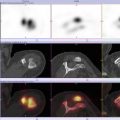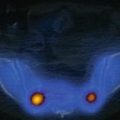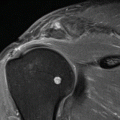Intrinsic factors
Extrinsic factors
Age
Training program
Sex
Sports technique
Body size and composition
Level of competition
Genetics
Equipment
Current health status
Environmental conditions
Malalignment
Psychological factors
Strength and flexibility
Nutrition
Previous injury
Drugs
Either on the sideline or in the clinic, an important decision the sports medicine physician has to make is whether an injury needs imaging or not. Obviously this is a subjective decision based on clinical experience and diagnostic examination skills. Due to technological advances like the availability of office and/or even sideline-based ultrasound (US), dedicated magnetic resonance imaging (MRI), and hybrid diagnostic imaging combining 3-dimensional reconstruction computer tomography (CT) and nuclear medicine-based imaging techniques, the clinician now has to choose from a variety of diagnostic options. An extensive description of these imaging modalities is beyond the scope of this chapter but can be found in Chaps. 2 and 3. With these newer imaging techniques, clinical judgment when to order specific testing procedures and how to interpret normal and abnormal findings becomes even more important. According to Coris et al. (2009), some basic ground rules, which follow “good medical practice,” can be set (Coris et al. 2009):
1.
Imaging should be undertaken only if it is likely to influence patient management.
2.
The dose of ionizing radiation to the patient should be considered.
3.
Requesting appropriate imaging method requires an understanding of the pathologic process.
4.
Plain X-ray should be the first imaging technique, but in more superficial tendon and muscle injuries, ultrasound (US) may be more appropriate.
5.
The cost of the examination to the patient and the community should also be considered.
In order to choose the most appropriate diagnostic procedures, good communication between the sports medicine physician and the imaging specialist is very important. The sports medicine physician should provide the radiologist or nuclear imaging specialist with relevant clinical findings but also with sports-specific information and its impact on the musculoskeletal system. Only in this way, the correct imaging technique can be chosen. Ideally the imaging specialist should have a keen interest in sports and the musculoskeletal system. Even more important, especially when dealing with elite athletes, is an understanding of what is going on and what is at stake in/for the athlete. He/she should be aware of the fact that in a competitive athlete even a minor abnormality, without clinical significance in a nonathlete patient, may hamper the training program or readiness to play.
Besides its role in diagnosis and decision-making, imaging techniques can also help to perform certain therapeutic procedures. For example, ultrasound can be used to guide intra-articular and intralesional therapeutic injections. It has been demonstrated that this increases the accuracy of needle placement and improves clinical outcome compared to non-guided procedures (Raza et al. 2003; Sibbitt et al. 2009).
1.4 Imaging in Elite Sports Medicine
In the “curious” and often demanding world of elite sports, the role of sports medicine and imaging seems to be quite different. Although “good medical practice” has to be followed, and the health of the athlete has the highest priority, the focus is on performance enhancement, competition, and return to play as quickly as possible. Therefore sports medicine physicians often request additional and costly imaging more easily, as they often need a more rapid and accurate diagnosis to guide management. Imaging techniques are also readily used to monitor ongoing pathology and to facilitate return-to-play decisions (McCurdie 2012). Support from sports-minded radiology and nuclear medicine imaging specialists is very helpful in these situations.
Stay updated, free articles. Join our Telegram channel

Full access? Get Clinical Tree







